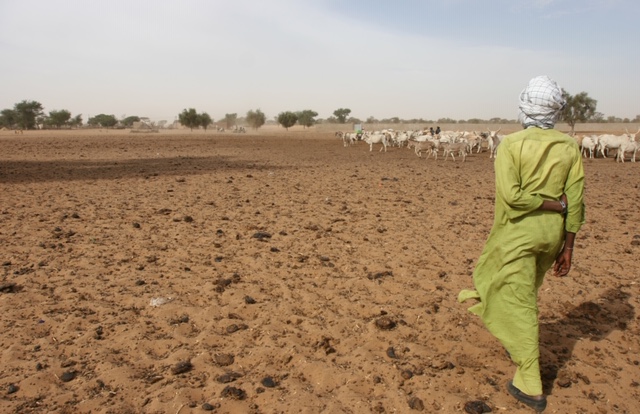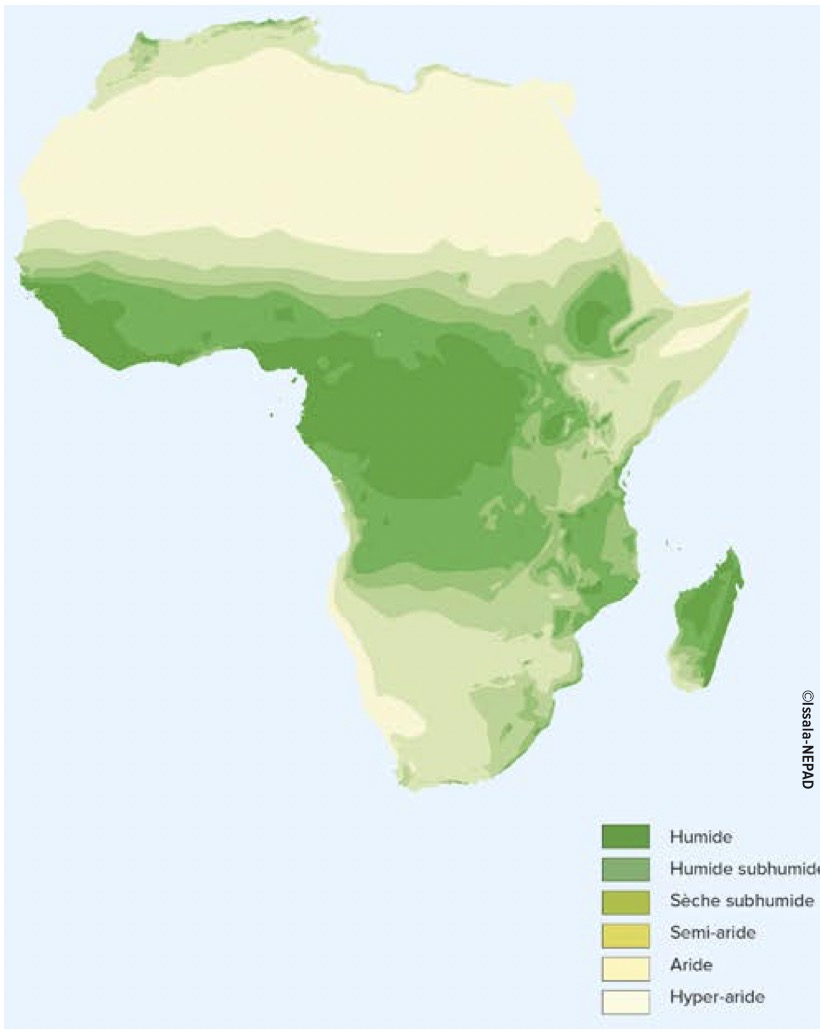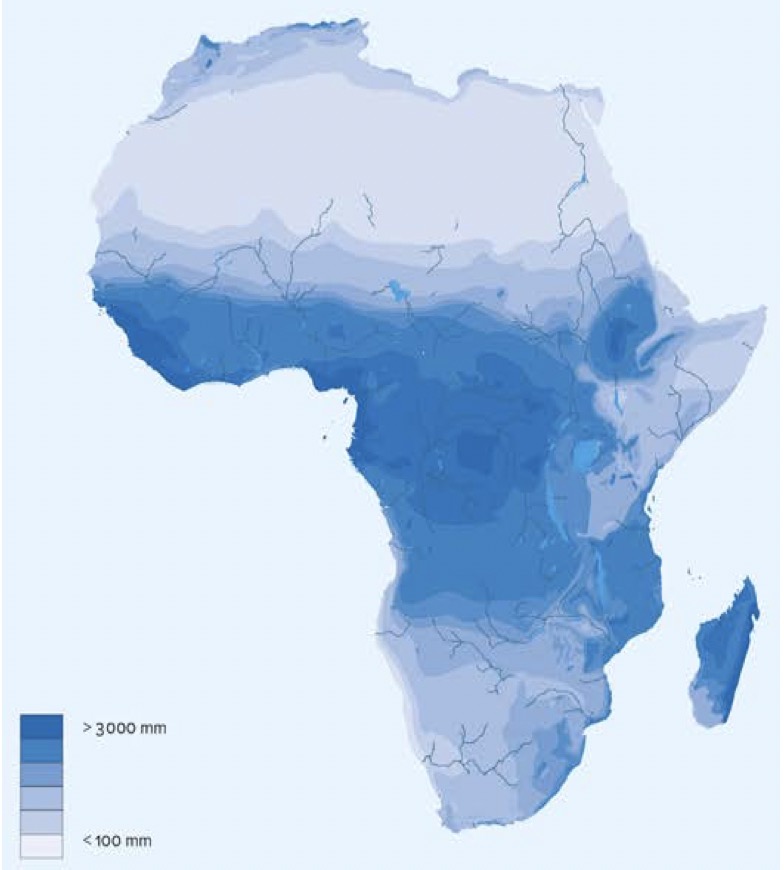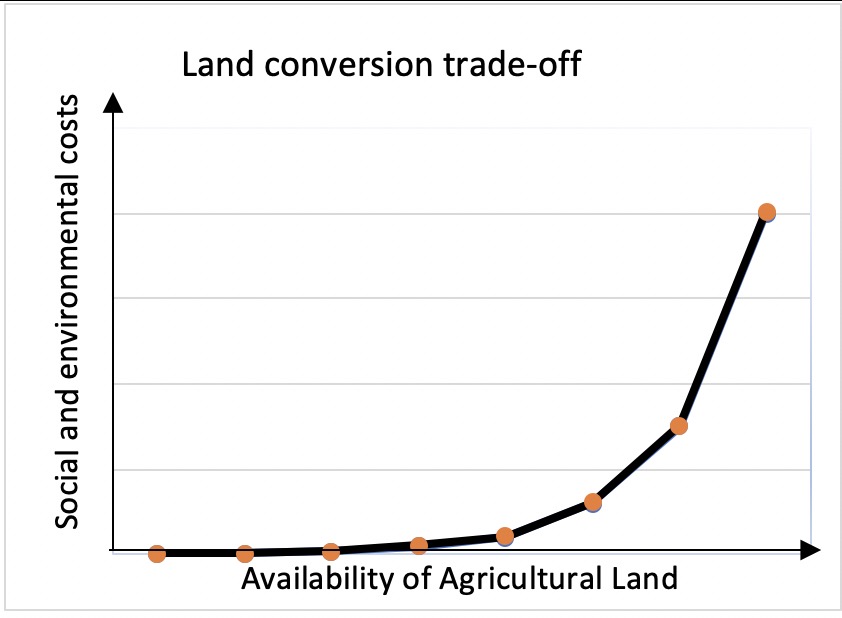The extensification under strong limits
Will we be able to push back the physical limits to the expansion of agriculture? Can we conquer new lands from the 50/100 million ha available and not operated under the pressure of a highly growing demand for land?
According to the forecasts of the FAO who founded the Comprehensive Africa Agriculture Development Program, a reference text adopted by the African Union (NEPAD, 2002), a quarter of the projected growth in agricultural production between 1995 and 2030 should come from the extension of arable land and three-quarters of the intensification in the form of increases in yields (62%), and more intensive farming(13%). This forecast has not fundamentally changed since. The FAO estimates today that agricultural production will triple by 2050 in Africa to meet the demand for food on the mainland and still considers that it will come twice as much from increased yields and crop intensity than from extensification, if such extensification complies with environmental constraints. One of the FAO forecasts regarding cultivated land focuses on 315 million ha in 2050 for sub-Saharan Africa, including 307 in rainfed farming and 8 in irrigated cultivation (FAO, 2011).

©Gret
Extensification is nonetheless implemented. As was the case between 1995 and 2016 since cultivated land in sub-Saharan Africa rose from 155 to 240 million ha (FAOSAT, 2017). The areas of cultivated land in the region of the Sahel in West Africa have doubled since 1975, the area of settlement increased by approximately 150% (Traoré et al.[1] , 2014). The new pioneering agricultural fronts are strongly developed at the expense of forest areas and areas of pastures, with detrimental effects, both for the communities concerned and for the supply of meat and milk for boththe rural and urban populations. Deforestation is increasing and agriculture is the main cause. Data published by Global Forest Watch (University of Maryland, 2019) place RD Congo in second place of the countries most affected by the disappearance of their forest ecosystems, with 480 000 ha lost in 2018, Brazil comes first, while Côte d’Ivoire, Ghana and Madagascar have seen their rate of loss increase considerably.
Large agroecological zones

Source, NEPAD, 2013
Annual rainfall (mm) and hydrographic network

Source, NEPAD, 2013
When it comes to protected areas, so numerous in Africa, some appear in certain situations (for example the Parks of Virunga, Kahuzi Biega and Salonga and the Garamba in RD Congo) as isolated areas, eaten away by forest clearance by farmers and practices used by breeders, and exploited by poaching, the illegal extraction of timber, the growing scope of mining… This heritage is in danger, as is the wildlife that lives there (Jacquemot, 2018b).
Extensification is sustainable by development and irrigation. In sub-Saharan Africa, currently only 6 per cent of the cultivated areas are irrigated (Nkonya et al. , 2016), compared with 40% in Asia. Renewable groundwater resources could contribute to increasing the proportion of irrigated land by more than 20 per cent of the cultivated land in the region (Altchenko and Villholth, 2015). But the excessive subtraction of groundwater for irrigation of crops would become an important environmental problem in many arid areas requiring a design and a careful planning of expansion projects.
Taking everything into account, extensification is never a cost-free, consequence-free option, and it rarely goes smoothly. Land tenure conflicts between pastoralists and sedentary farmers are more frequent.
The conversion of land to increase availability is therefore an option considered restricted, compared with the potential yield from intensification (conventional, transgenic or agro-ecological). As we have seen, there are many .reasons. It can be summarized by saying that extensification always comes with exponential costs. The graph below provides a simple illustration: the xxxx depend on the ecological and social cost of land conversion, which increases the closer you get to the physical limits.

The decision to convert new lands is based on the trade-off between the expected production gain and the estimated cost of the loss in social and ecosystem services provided by the land environment in question. Extensification reaches its limits, for example, when the gains obtained after deforestation are equivalent to the losses caused by the resulting degradation of the soil and the loss of environmental services provided by the forest (protection of a watershed and therefore of water resources; climate regulation and carbon storage, concentration of biodiversity provided by the habitat available to various species of fauna and flora; wood for industrial purposes or converted to wood-energy; non-timber resources such as fruits, gums, medicinal plants…).



